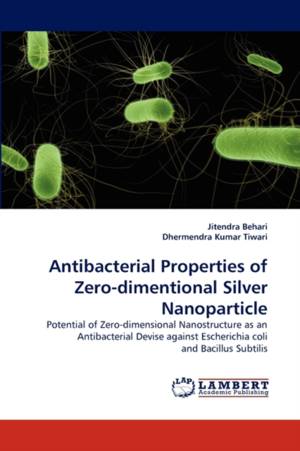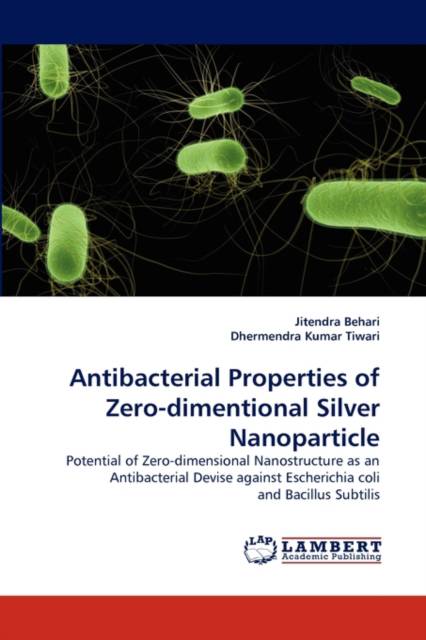
- Afhalen na 1 uur in een winkel met voorraad
- Gratis thuislevering in België vanaf € 30
- Ruim aanbod met 7 miljoen producten
- Afhalen na 1 uur in een winkel met voorraad
- Gratis thuislevering in België vanaf € 30
- Ruim aanbod met 7 miljoen producten
Antibacterial Properties of Zero-dimentional Silver Nanoparticle
Potential of Zero-dimensional Nanostructure as an Antibacterial Devise against Escherichia coli and Bacillus Subtilis
Jitendra Behari, Dhermendra Kumar Tiwari
Paperback | Engels
€ 59,95
+ 119 punten
Omschrijving
The toxicity of silver to bacterial cells is well documented. It has been reported that Ag- nanoparticles are active biocidal agent against Gram +ive Gram -ive bacteria. Silver nanoparticles are non-toxic to human body at low concentration. It inhibits the bacterial growth at very low concentration than antibiotics and has no side effect in patients. Viewing all the above facts, it is necessary to develop a substitute for antibiotics. In this study, silver (Ag) nanoparticles (~6 nm) were synthesized using electro-exploding wire (EEW) technique. Antibacterial action of Ag nanoparticles was studied both in liquid and solid phase using colony forming unit (CFU) detection. Time and dose- dependent study of Ag nanoparticles shows that the effectiveness of particles increases with increasing particle dose and treatment time. This effect was dose-dependent and more pronounced against Gram -ive bacteria compared to Gram +ive bacteria. Transmission electron microscopy result shows particle binding with bacterial cell membrane. Membrane potential assay and cytoplasm diffusion assay show the effectiveness of Ag nanoparticle used in this study.
Specificaties
Betrokkenen
- Auteur(s):
- Uitgeverij:
Inhoud
- Aantal bladzijden:
- 108
- Taal:
- Engels
Eigenschappen
- Productcode (EAN):
- 9783838377193
- Verschijningsdatum:
- 25/06/2010
- Uitvoering:
- Paperback
- Afmetingen:
- 150 mm x 220 mm
- Gewicht:
- 160 g

Alleen bij Standaard Boekhandel
+ 119 punten op je klantenkaart van Standaard Boekhandel
Beoordelingen
We publiceren alleen reviews die voldoen aan de voorwaarden voor reviews. Bekijk onze voorwaarden voor reviews.










